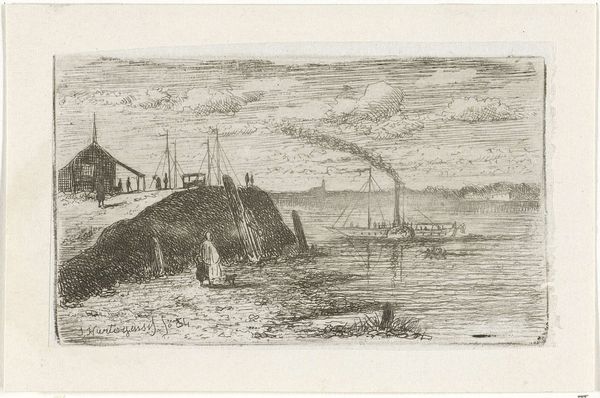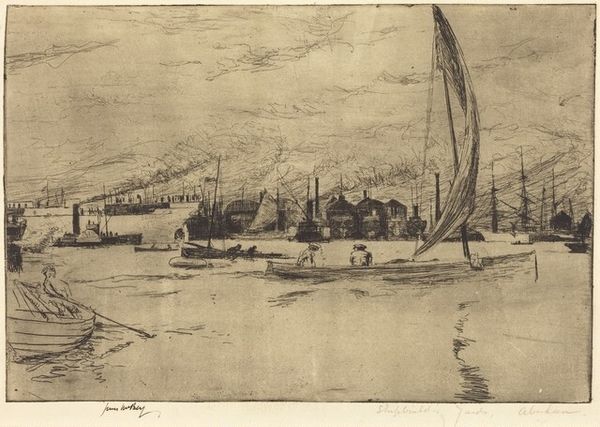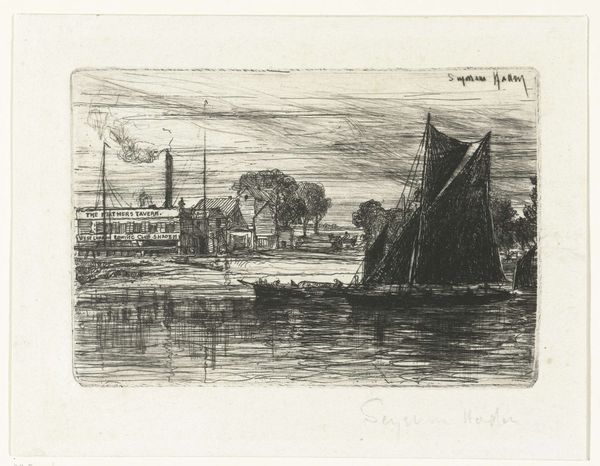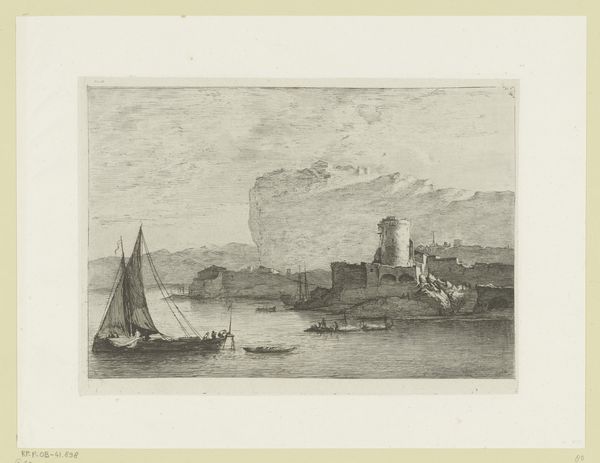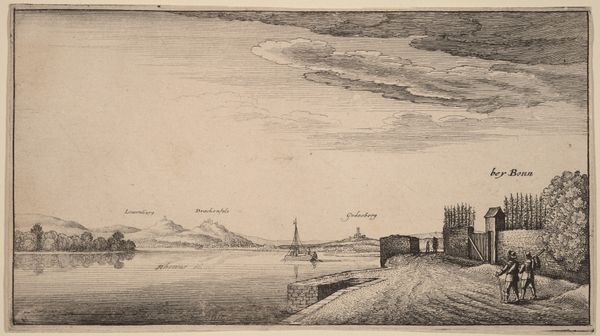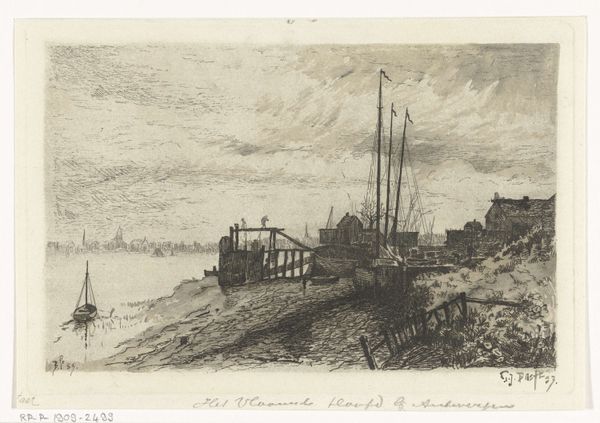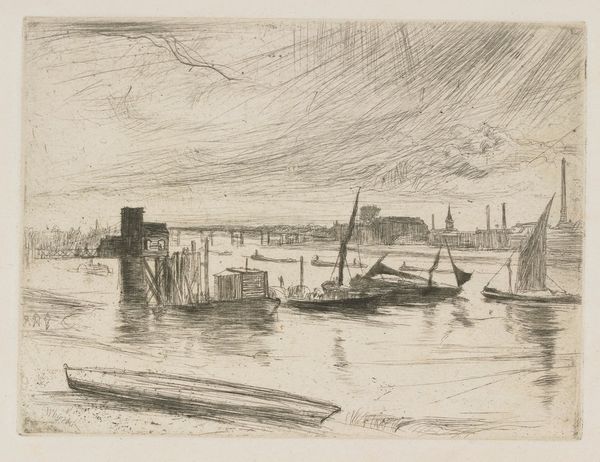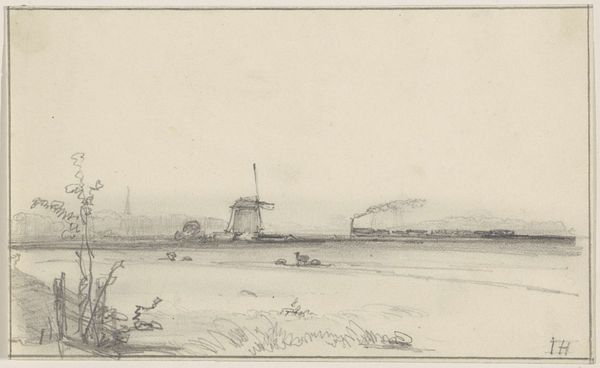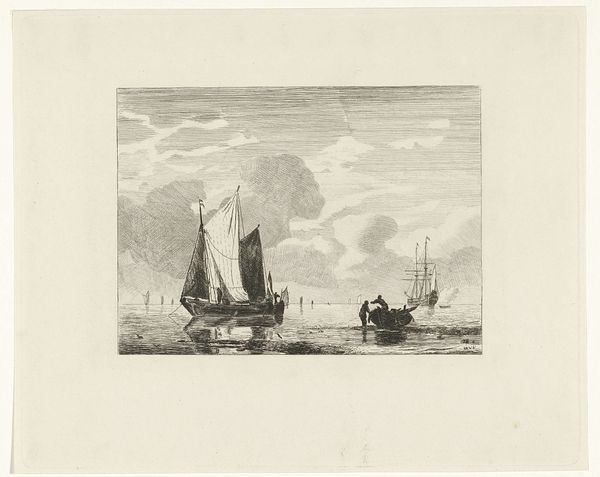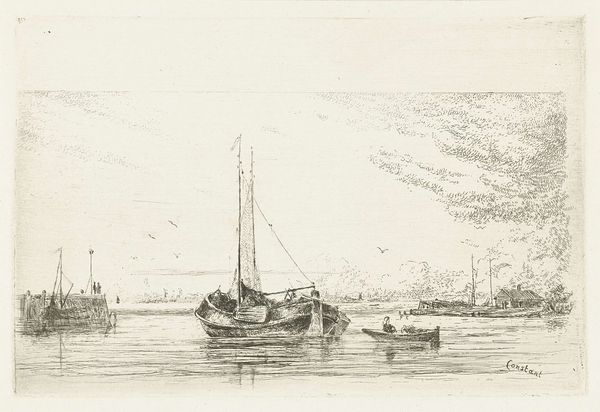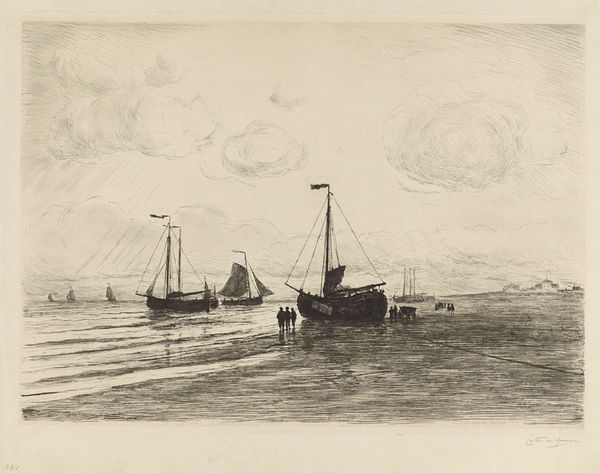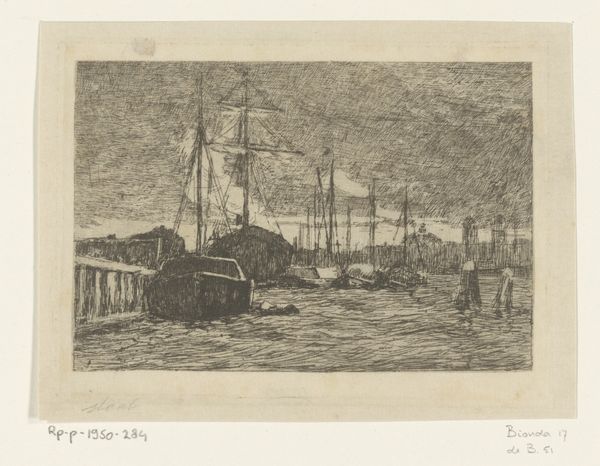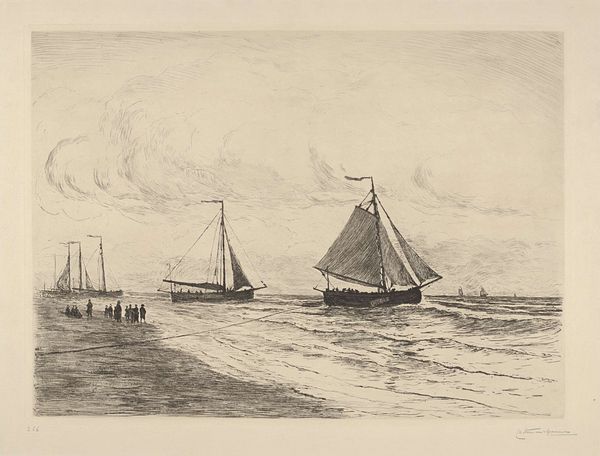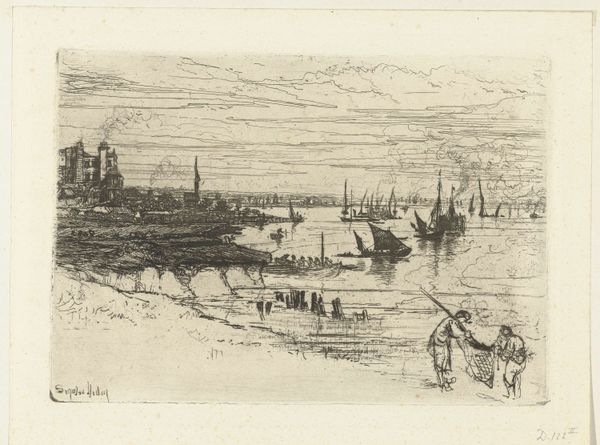
Dimensions: height 50 mm, width 85 mm
Copyright: Rijks Museum: Open Domain
Curator: Joseph Hartogensis's 1854 etching, "River View with a Steamboat," captures a serene yet bustling riverside scene. The print medium itself provides an intimate scale that draws the viewer in. Editor: My immediate impression is one of stillness despite the steamboat. The composition, with the low horizon line, creates a sense of tranquility. It's monochromatic and the lines define the subjects perfectly. Curator: Indeed. Consider the context: 1854. The industrial revolution is reshaping society and steam power dominates the transportations sectors. This piece captures that moment through its attention to work, social interactions and transport that it reveals a dynamic period. Look at the working-class figures populating the shore—are they waiting for transportation? Editor: Semiotically, the steamboat functions as a clear signifier of progress, but visually, its soft rendering almost blends it into the sky, lessening its impact and drawing attention back to the scene along the riverbank, where a woman with a dog stands, emphasizing that the steamboat itself becomes part of a rural landscape. The clouds mirror its smoke, in a manner where Hartogensis composes his artwork in symmetry. Curator: Let’s not ignore that it's a print, etching specifically. The deliberate and time-consuming nature of the craft adds a layer to its interpretation. Each line carefully etched suggests a commentary on the changing landscape from human hand to industrial object. These tools were made in mass and the scene captured in it depicts the transformation, while embracing it too. Editor: True. But how the artist handles the line itself – the density, the direction – is what builds our perception of depth and form. Notice how the hatching creates shadows, grounding the figure and suggesting their connection to the land. It's through the composition that Hartogensis articulates not the physical nature of materials but the intrinsic artistic quality within the Romanticism style. Curator: But the etching method made artwork affordable. This allowed new audiences to access landscape and style previously exclusive to wealthy. It is a transformation in consumer culture itself and availability in print impacts social perceptions in many different ways. Editor: Ultimately, this print blends an engagement with social themes while offering an invitation to visually consider how the work’s intimate scale emphasizes those Romanticism views of rural harmony. Curator: A pertinent reminder that art is interwoven with evolving socio-economic realities.
Comments
No comments
Be the first to comment and join the conversation on the ultimate creative platform.
